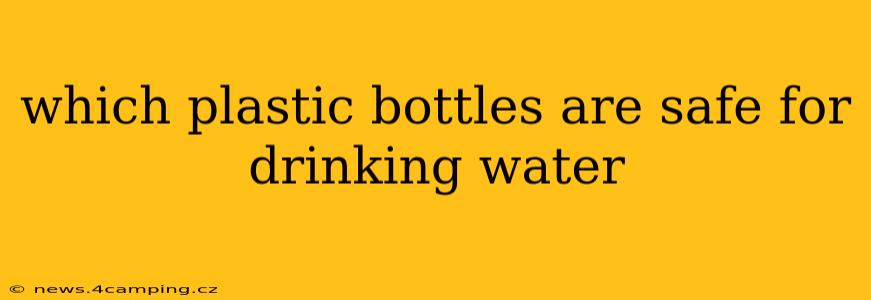Which Plastic Bottles Are Safe for Drinking Water? A Comprehensive Guide
Choosing the right plastic bottle for drinking water is crucial for your health and the environment. Not all plastics are created equal, and some can leach harmful chemicals into your water, especially when exposed to heat or sunlight. This guide will help you navigate the confusing world of plastic bottle safety and choose the best option for your needs.
What are the different types of plastic bottles?
Plastic bottles are usually marked with a recycling code, a number inside a triangle. This number indicates the type of plastic used. Understanding these codes is vital in determining which plastics are safe for water storage:
- #1 PET or PETE (Polyethylene Terephthalate): Widely used for single-use water bottles. Generally considered safe for single use but not for repeated use or storage. Repeated use can lead to leaching of chemicals.
- #2 HDPE (High-Density Polyethylene): Often used for milk jugs and detergent bottles. Generally considered safe for repeated use and is a better option than PET for storing water.
- #3 PVC (Polyvinyl Chloride): Avoid using PVC bottles for water storage. It can leach harmful chemicals, particularly when exposed to heat.
- #4 LDPE (Low-Density Polyethylene): Used for squeezable bottles and plastic bags. Generally considered safe for food contact but not ideal for water storage due to its flexibility.
- #5 PP (Polypropylene): Often used for yogurt containers and some reusable water bottles. Generally considered safe for repeated use and is a good choice for storing water.
- #6 PS (Polystyrene): Used for disposable cups and take-out containers. Avoid using PS for water storage as it can leach styrene, a potential carcinogen.
- #7 Other: This category encompasses a variety of plastics, and safety varies greatly. It’s best to avoid bottles labeled with #7.
Are reusable plastic water bottles safe?
Reusable plastic water bottles are a great alternative to single-use plastic, but you need to choose the right type. Look for bottles made of #2 HDPE or #5 PP. These plastics are generally considered safer for repeated use and less likely to leach chemicals into your water. Always check the manufacturer's recommendations and avoid using the bottle if it's damaged or scratched.
How can I tell if my plastic water bottle is leaching chemicals?
Unfortunately, there's no easy way to visually determine if a plastic bottle is leaching chemicals. However, some signs might indicate a problem:
- Unusual odor or taste: If your water has an odd smell or taste, it may be contaminated.
- Visible damage: Cracks, scratches, or discoloration can compromise the integrity of the plastic and increase the risk of leaching.
- Exposure to extreme temperatures: Leaving a plastic bottle in direct sunlight or in a hot car can accelerate chemical leaching.
What are the best plastics for drinking water bottles?
The safest plastics for drinking water bottles are generally considered to be HDPE (#2) and PP (#5). These plastics are durable, less prone to leaching, and widely used in reusable bottles.
Are glass water bottles a safer alternative?
Yes, glass water bottles are generally considered a safer alternative to plastic. Glass doesn't leach chemicals into water and is easy to clean. However, glass is more fragile and can break.
How long can I keep water in a plastic bottle?
It's best to consume water from a plastic bottle as soon as possible. Even with safe plastics, prolonged storage can lead to bacterial growth or off-flavors. Avoid storing water in plastic bottles for extended periods, especially in warm environments.
By following these guidelines and carefully selecting your plastic water bottles, you can minimize the risk of exposure to harmful chemicals and stay well-hydrated. Remember, choosing reusable options is a crucial step in reducing plastic waste and protecting the environment.
